Music is the universal language
“Glory to God in the highest heaven, and on earth peace to those on whom his favor rests.” - Luke 2:14
Norse Guitar Feeds
Mod Garage Guitar Makeover: Neck-Pocket Cleanup and DIY Routing
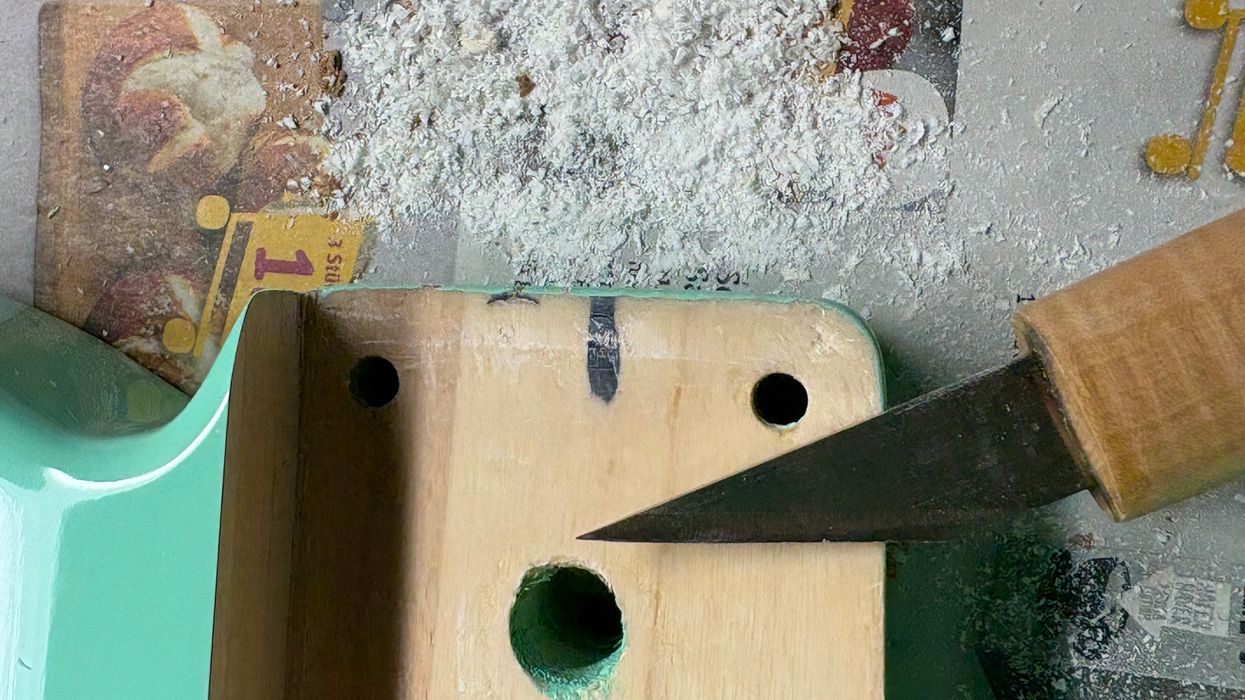
Hello, and welcome back to Mod Garage! Let’s pick up where we left off with our Telecaster.
Our next step will be to take care of the neck pocket, which is a very important and crucial task. This is the contact point of the body and the neck, so we want a tight, precise connection for maximum tuning stability and playing comfort.
I don’t know if it’s the same on all Harley Benton T-styles, but the fitting accuracy of the Harley Benton’s neck and neck pocket is perfect—I wish I saw this kind of quality on guitars which cost more than 10 times the price of this one! No need to modify our neck pocket by gluing in some wooden veneer to make it tighter; we can leave it just the way it is.
While the fitting is commendable, unfortunately the craftsmanship of the neck pocket itself is not that good. Besides wooden debris and chips, there’s a lot of “stuff” inside that I can’t identify for certain, but it’s likely some grain filler and clear coat. We’ll need to remove a fair amount from the neck pocket to ensure the heel of the neck has a completely level surface for installation.
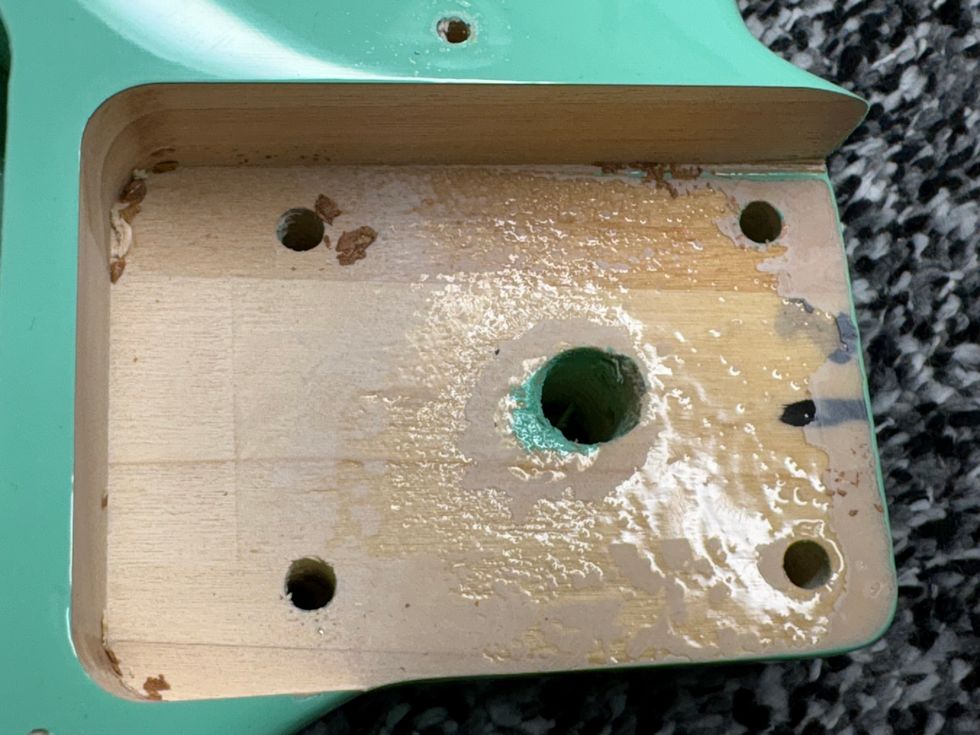
I decided to use a simple razor blade, a Japanese carving knife, and a razor knife to scrape all the junk away. You can also use some micro chisels, or even simply sanding paper. Special knives that are used for guitar lutherie as well as violin-making are ultra-sharp, and with some practice, it’s easy and fast to use them for such tasks. I was surprised by how much material there was in the neck pocket; it had a strong chemical smell to it, so it went immediately into the garbage.

Next, I took some sandpaper of different grits to make the surface as smooth as possible. I started with 150-grit and worked my way up to 1000-grit. After blowing away all dust, the neck pocket was absolutely even and clean, offering the perfect surface for the neck heel. Pleased with the result, I moved on to the next task.
For some reason, there was a big hole in the neck pocket, which I think has something to do with the CNC routing or the painting process. While this hole is not a problem regarding stability, and it’s invisible after the neck is installed, it’s not in the original Fender design, and my inner monk can’t live with this, so it had to be closed with a wooden dowel. After measuring, it turned out to be a metric 10 mm hole, and I knew luck was on my side—as is often the case, IKEA would be my best friend. You’re probably familiar with the bevelled wooden dowels used on almost every IKEA product to attach two parts together. They’re made out of strong beech wood and available as individual spare parts with an 8 or 10 mm diameter, so I always have a good collection in the shop. This was easy going: I simply cut the dowel to length and put it in a cup of warm water for a couple minutes so it expanded a little bit for a tight fit. After drying it for a short time, I put some wood glue on it, plus some in the hole, before pushing it in and wiping away the excess glue with a damp cloth.
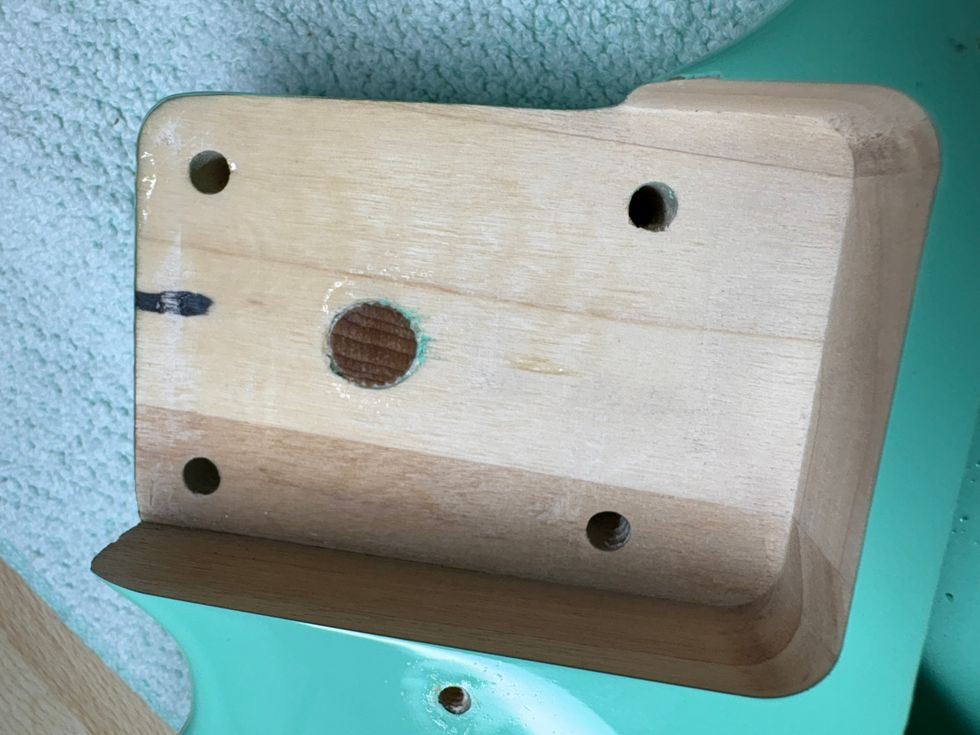
A tip from the shop: Ask your local optical store what they are doing with the old lenses from their customers. If there’s a chance you can get some for free, this is the perfect helper for any glue job—I always have a good collection of such lenses in the shop, and they’re easy to clean with a bit of rubbing alcohol. Put the wood glue on the concave side of the lens and use a toothpick to apply the glue to the dowel and hole. Afterwards, wipe the rest of the glue away, clean the lens with water, and it’s ready for the next time. This also works for super glue, but you’ll have to throw away the lens afterwards.
Here, we can clearly see how many different pieces of wood are glued together for the body (I count four pieces alone in the small neck pocket), that the body is laminated horizontally, and the thickness of the paint.
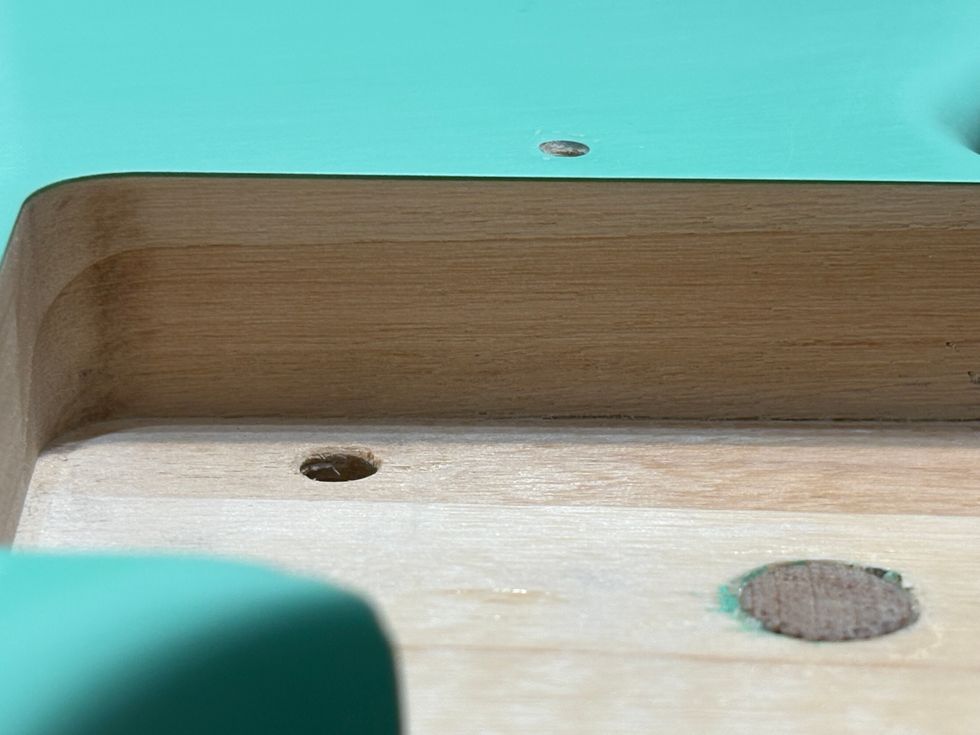
As you can see, the routings for the bridge pickup and the electronics are a little bit strange. The bridge pickup’s cavity is relatively shallow, and a Forstner drill bit was used to create deeper spots for the three screws holding the pickup in place. At the bottom of the electronics compartment is a block of wood, which I’d guess was there to shorten routing time and reduce production costs. I still haven’t decided on the pickups and electronics I’ll use for this guitar, but I certainly don’t want to run into any trouble making them fit. The wooden obstruction here could limit what sorts of pots and pickup-selected switches we can use, so it’s best to get ahead of that and remove it from the equation. (Even if it doesn’t end up being 100 percent necessary, it’ll remove a bit of excess weight!) So, let’s carve out some space here.
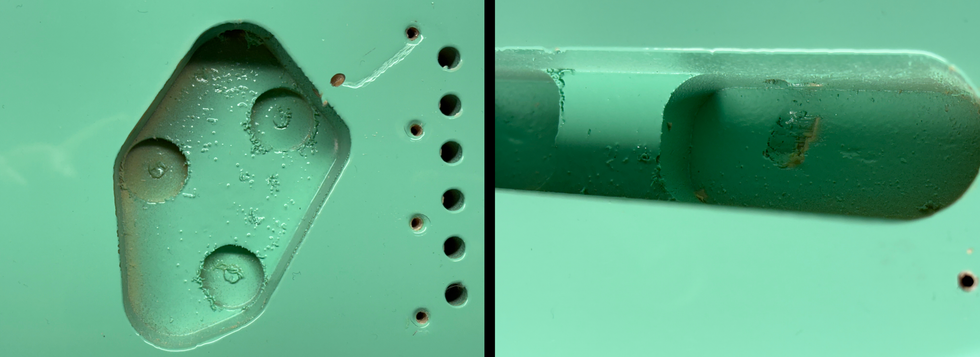
The professional way would be to mask the whole body with tape and use a handheld router to remove the wood. Since I bet most of you don’t have that sort of tool, we’ll do it the old-fashioned way, using a Forstner drill bit and a drill press. I don’t recommend any handheld drilling device for this—if you don’t have access to a drill press or a handheld router, ask your local carpenter if he can do the work for you. After masking the body, the drilling process is easy to do with a sharp Forstner bit. I used a smaller one for the edges and a bigger one for the rest.
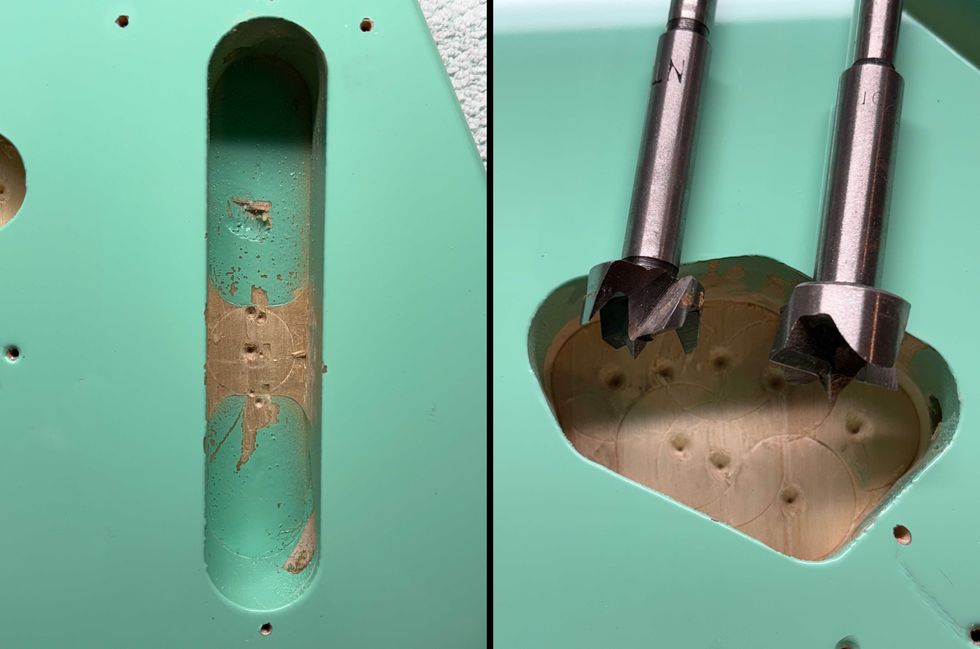
It’s a crude but effective—and fast—way to remove the wood. After the drilling, I used some sandpaper to smooth out the surface and put some shellac on the bare wood, but this isn’t mandatory—my inner monk, you know? Take care to not drill too deep, which happened to me years ago on a custom-made Jaguar body with a very special paintjob. That wasn’t fun to explain to the customer.
Next month, we’ll finish the work on the body, before moving on to the hardware and electronics. The good news is that our $340 budget is still in hand for future investments, so stay tuned.
Rush Announce 2026 Reunion Tour

Rock and Roll Hall of Fame® Inductees, GRAMMY® Award-nominated icons, and RUSH Co-Founders Geddy Lee [bass, keys, vocals] and Alex Lifeson [guitar, vocals] have announced their return to the stage for a very special 2026 headline tour, Fifty Something, in celebration of RUSH’s music, legacy, and the life of late drummer and lyricist Neil Peart. It notably marks the first time Lee and Lifeson have toured together in eleven years since the finale of RUSH’s R40 Tour on August 1, 2015 at the Forum in Los Angeles, CA, bringing it full circle with a return to the Forum to embark upon these special shows.Of the tour, Geddy Lee says:
“It’s been over 10 years since Alex and I have performed the music of RUSH alongside our fallen bandmate and friend Neil. A lifetime’s worth of songs that we had put our cumulative hearts and souls into writing, recording and playing together onstage. And so, after all that has gone down since that last show, Alex and I have done some serious soul searching and come to the decision that we fucking miss it, and that it’s time for a celebration of 50-something years of RUSH music. So in 2026, my BFF Lerxst (aka Alex Lifeson) and I are going to hit the road once again to pay tribute to our past and to Neil by performing a vast selection of RUSH songs in a handful of cities. No small task, because as we all know Neil was irreplaceable.
Yet life is full of surprises, and we have been introduced to another remarkable person; an incredible drummer and musician who is adding another chapter to our story while continuing her own fascinating musical journey. Her name is Anika Nilles, and we could not be more excited to introduce her to our loyal and dedicated RUSH fanbase, whom, we know, will give her every chance to live up to that near impossible role. Before we hit the stage, we also hope to add another musician or two to expand our sound a wee bit and free up Alex and I, in order to show off some of our new fancy dance steps.
Lerxst, Anika and myself, along with many of our longstanding crew members have been hard at work rehearsing and designing the kind of RUSH show you’ve grown accustomed to expect from us. We dearly hope you will come along and help us celebrate our history together.”
Carrie Nuttall-Peart and Olivia Peart, Neil’s widow and daughter share:
“We are thrilled to support the Fifty Something tour, celebrating a band whose music has resonated and inspired fans for generations, and to honor Neil’s extraordinary legacy as both a drummer and lyricist.
Neil’s musicianship was singular. Compositions of intricacy and power that expanded what rhythm itself could express. As both drummer and lyricist, he was irreplaceable. Inimitable in his artistry, and unmatched in the depth and imagination he brought to the lyrics that inspired and moved so many, he profoundly shaped how fans connected with him and the band, giving voice and meaning to their own lives.
As the band enters this new chapter, it promises to be truly unforgettable. We are excited to see how their new vision unfolds, and to hear this legendary music played live once again.”
Earlier today, fans got the news via a Rush newsletter from a home video that announced the celebration of upcoming dates with Geddy Lee and Alex Lifeson at Geddy Lee’s home studio. Watch here.Last night the band celebrated in a private event at the Rock & Roll Hall of Fame in Cleveland with this on-stage interview and Q&A. Watch full clip here.RUSH will perform multiple shows in 7 cities across Canada, the United States and Mexico, beginning June 7, 2026 at The Kia Forum in Los Angeles. These special “evening with” shows will find the band playing two sets each night. Each show will feature a distinct selection of songs and RUSH will build each night’s setlist from a catalogue of 35 songs including their greatest hits and fan favorites.
For Fifty Something, Lee and Lifeson will be accompanied by German drummer, composer, and producer Anika Nilles, who has performed as Jeff Beck’s drummer for over 60 shows and has released four solo albums.
Fans will be able to participate in the RUSH Artist Presale by signing up at https://livemu.sc/rush by Thursday, October 9 at 11:59pm ET.
Artist Presales for this tour are hosted by multiple ticketing sites but anyone who signs up can join the sale. For Artist Presales on Ticketmaster, no code is needed – access is tied to your account. The Artist Presale on SeatGeek for Cleveland will require a code. The Artist Presale begins on Monday, October 13 at 12PM local time in the US and Canada and Thursday, October 16 at 12PM local time in Mexico. General onsale begins here on Friday, October 17th at 12pm local time for the US & Canada, and 11am local time for Mexico.
Additionally, these pre-sales will be available:
- Citi for US shows: Citi is the official card of the RUSH 2026 tour. Citi cardmembers will have access to presale tickets in the US beginning Friday, October 10 at 12pm local time until Sunday, October 12 at 11:59pm local time through the Citi Entertainment program. For complete presale details visit www.citientertainment.com.
- American Express for Canada: American Express® Card Members can purchase tickets for the Toronto show before the general public beginning Friday, October 10 at 12pm local time through Sunday, October 12 at 11:59pm local time.
- Banamex for Mexico City: Banamex cardholders will have presale access ahead of the general onsale. Times vary based on Banamex card type, see list below for more details.
- (BEYOND BANAMEX): Presale available Monday, 10/13 9:00 AM local to 11:59 PM local
- (ELITE BANAMEX): Presale available Tuesday, 10/14 9:00 local to 11:59 PM local
- (ALL CARDS): Presale available Wednesday, 10/15 11 AM local to 11:59 PM local
Rush invites fans to get closer than ever with three elevated offerings: an all-new VIP program, the first-ever 2112 Platform Experience, and curated Travel Packages for fans making a trip to see the show.
For VIP: http://wearesuper.co/rushvip
For Travel: http://wearesuper.co/rushtravel
TOUR DATES
Sun Jun 07 Los Angeles, CA Kia ForumTue Jun 09 Los Angeles, CA Kia Forum
Thu Jun 18 Mexico City, MX. Palacio de los Deportes
Wed Jun 24 Fort Worth, TX Dickies Arena
Fri Jun 26 Fort Worth, TX Dickies Arena
Thu Jul 16 Chicago, IL United Center
Sat Jul 18 Chicago, IL United Center
Tue Jul 28 New York, NY Madison Square Garden
Thu Jul 30 New York, NY Madison Square Garden
Fri Aug 07 Toronto, ON Scotiabank Arena
Sun Aug 09 Toronto, ON Scotiabank Arena
Thu Sep 17 Cleveland, OH Rocket Arena
Additionally, RUSH just revealed the 50-track super deluxe anthology, RUSH 50, that Rolling Stone called “an epic saga, that functions equally well as an introduction for the uninitiated or a companion piece for the super fan.” RUSH 50 is available in five distinct configurations, including the (1) Super Deluxe Edition, (2) RUSH Store Exclusive Super Deluxe Edition, (3) 7-LP Deluxe Edition, (4) 4-CD Deluxe Edition, and (5) Digital Edition. It represents breadth of their discography, beginning with the first-ever reissue of their 1973 debut single and concluding with a live recording the final song Lee, Lifeson, and Peart played together during the R40 Tour closer at The Forum. Purchase HERE.
Get ready to celebrate the music of RUSH with Lee and Lifeson live in 2026!
“I’d be like, I have to say a couple of prayers to John Paul II, Mother Teresa, and the big guy”: Zakk Wylde was scared Ozzy Osbourne wouldn’t get through Black Sabbath’s final concert

Zakk Wylde has been reflecting on the final Black Sabbath show that took place in July, and has shared his awe at how Ozzy Osbourne managed to pull through despite his health struggles.
The band’s final gig took place at Villa Park in Birmingham, UK earlier this summer, and formed part of one giant celebration of all things metal, all while raising money for charity. Osbourne sadly passed away just a matter of weeks later, and his loss was felt deeply across the world by both fans and fellow artists.
Wylde, who joined Osbourne’s solo band in 1987, previously shared how challenging the final gig was to pull off. While his main concern was ensuring that Osbourne himself was doing okay, he also said that pretty much everything was pulled off on the fly.
Further looking back at the big day and his time spent playing for Osbourne in a new interview with Rock Feed, Wylde says the Prince of Darkness somehow always managed to tough out his shows.
“[With] Ozz, you’re talking about fortitude and persistence and just refusing… I mean, I even wrote to him after the show. I was like, ‘Ozz, so proud of you, man.’ He never quit. Like, never quit. I can’t tell you how many times his voice would be banged up,” he explains (via Ultimate Guitar).
“I’d be like, ‘I have to say a couple of prayers to John Paul II, Mother Teresa, and the big guy’, several times during the show… But he’d always end up pulling through these gigs. I mean, I’d always stare at him in amazement and just go, ‘That’s my hero, man,’ all the time.”
Another player who has since looked back on their last interaction with Osbourne is Nuno Bettencourt. Though now known for his stellar guitar work in Extreme, Bettencourt was offered a job with Osbourne in the 1990s, but turned it down as he was busy with his own band. He’d also previously auditioned to play for him as a teenager, but didn’t get selected.
“The last words we said to each other when we took the big group photo, I grabbed his hand, saying, ‘Thank you for everything, and thank you, Ozzy, for what you mean to me,’” Bettencourt told Page Six at the VMAs.
“He pulls me in by the hand. He goes, ‘You were the only guitar player who said no to me.’ But he laughed! He goes, ‘I love you and thank you for being here.’”
The post “I’d be like, I have to say a couple of prayers to John Paul II, Mother Teresa, and the big guy”: Zakk Wylde was scared Ozzy Osbourne wouldn’t get through Black Sabbath’s final concert appeared first on Guitar.com | All Things Guitar.
“His playing transcends decades – I could never really capture the essence of him”: Former Guns N’ Roses guitarist Buckethead on the genius of Slash

Buckethead has responded to a complimentary Facebook post by Slash commending his guitar skills.
Buckethead – real name Brian Patrick Carroll – played with Guns N’ Roses between 2000 and 2004 following Slash’s departure, and appeared on the band’s long-delayed 2008 album Chinese Democracy.
Reposting a video of Buckethead jamming with Primus’s Les Claypool on his social media, Slash wrote last week: “This is some of the funkiest music you’ll ever hear! Buckethead and Les Claypool of Primus creating pure magic together. The bass lines are absolutely insane and Buckethead’s guitar work is next level as always.
“If you love funk, progressive rock, or just incredible musicianship, this jam will blow your mind! Both legends pushing each other to new heights. Support Buckethead whenever you can!”
To repay the favour, Buckethead has made a social media post of his own waxing lyrical about the genius of Slash’s playing.
“Just wanted to say that Slash is one of the greats of all time, as everyone knows” he writes. “He was involved in writing music and his playing transcends decades and to reach such a wide amount of people playing really incredible guitar is such a rare thing.
“In the time I was involved in attempting to play his parts, never really could I have captured the essence of him. So much of who he is comes from his playing. I’ll always be in awe of how great he is.”
#buckethead responds to Slash reposting footage of him on instagram
Posted by Buckethead on Thursday, October 2, 2025
Though Buckethead possesses otherworldly guitar talents – which match his similarly extraterrestrial aesthetic – it’s not all that surprising he found it hard to emulate Slash’s guitar playing, given their respective backgrounds. Slash’s musical identity is rooted in the rock ‘n’ roll excess of the ‘80s, while Buckethead is widely praised for his head-spinning shred capabilities, which he does while wearing a family-sized KFC bucket on his head.
The post “His playing transcends decades – I could never really capture the essence of him”: Former Guns N’ Roses guitarist Buckethead on the genius of Slash appeared first on Guitar.com | All Things Guitar.
“It’s really important for guitarists to have something identifiable about the way they sound. In 2025 that’s getting lost”: Where can’t amp modellers compete with physical pedalboards? UK math rock guitarist weighs in
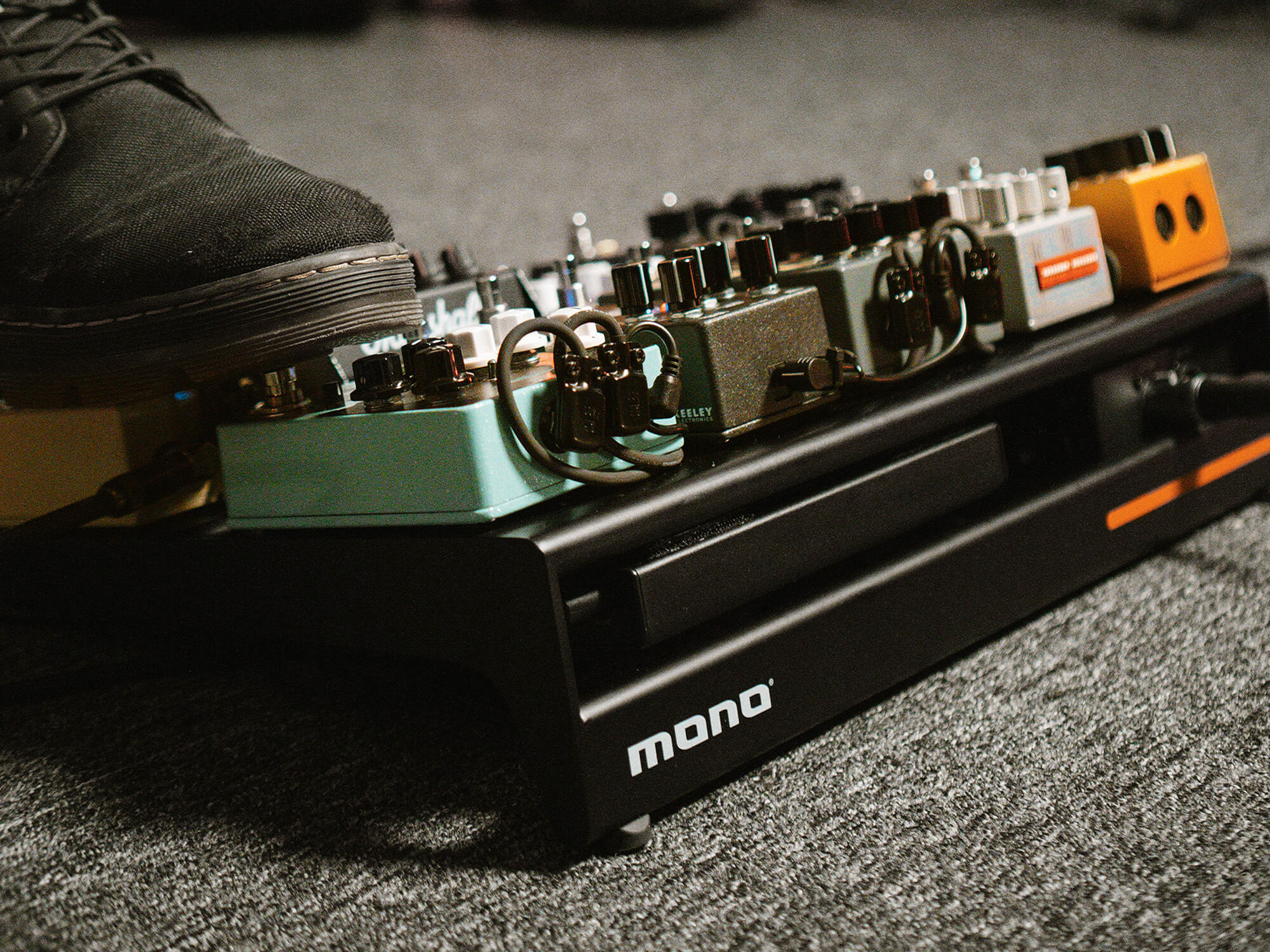
Floorboard amp modellers have sure made touring easier for a growing number of artists, but are they impacting our identities as players?
The small yet mighty power of gear like the Neural DSP Quad Cortex means bands no longer need to transport heavy and somewhat fragile gear across borders, but can rather chuck all the tones they need quite literally into a backpack. But without physical pedals and real life amplifiers, some artists are concerned that sonic identity and uniqueness could slowly fade away.
This is a concern recently raised by Tom Peters of UK-based math rock band, Alpha Male Tea Party. In an interview with Guitar World, Peters likens the modeller’s impact on the creation and performance of music to Spotify’s vast effect on how we listen to it.
“Why do I insist on a massive physical board when modellers exist? Well, one, I’m quite stubborn; and two, I feel it’s really, really really important for musicians in bands to have something identifiable about the way they sound and what they do. And in 2025 that’s getting lost,” he explains.
“The heart of my board is the Boss ES-8 switching system. I used to hate doing all the tap dancing, so I’ve got a bunch of pedals set up on MIDI – you can look at it and say, ‘This is complex,’ but anyone with a Quad Cortex or your basic laptop freebie has more options in the box than I do on my board.
“For me, modellers are a bit like Spotify. I don’t connect with music in the same way I did when I went to a store to buy a CD. Back then I’d wilfully choose to buy something and add it to my collection. Spotify gives you all the music in the world, ever. People listen to it and go, ‘That’s a great record’ – and then move on to another one. Within two weeks of an album cycle people have moved on.”
To clarify, Peters doesn’t judge or shame anyone for using modellers, and notes that they do indeed work very well, “But I don’t think I’d ever get that excited about having a box that has literally every single tone in it, because I haven’t worked to get them,” he continues.
“Another thing we’re losing now is our interaction with tactile processes, and that’s so important to me. I don’t really like looking at menus. It’s just tedious: these dead-end neural pathways. A lot of it is about the response of it when I’m playing. People talk about convenience, but I don’t want to feel comfortable all the time. Convenience isn’t helpful to creativity; it’s a slightly inverse relationship.”
Artists who have used modellers on the road include Metallica, Foo Fighters’ Chris Shiflett, and Slipknot’s Jim Root. Though they proudly sing the praises of such tech, these artists also still argue that their love of traditional gear has not gone anywhere.
Like it or lump it it’s a market that is only getting bigger, with Line 6 recently launching its monumental Helix Stadium range, offering entirely new modelling technology.
The post “It’s really important for guitarists to have something identifiable about the way they sound. In 2025 that’s getting lost”: Where can’t amp modellers compete with physical pedalboards? UK math rock guitarist weighs in appeared first on Guitar.com | All Things Guitar.
Devin Townsend says metal was “undervalued” by the music industry thanks to “Mötley Crüe and all that s**t”

Devin Townsend has argued that bands like Mötley Crüe were the reason metal never got the credit it deserved in the industry.
In a new interview with D’Addario, Townsend opens up about the philosophies that shaped his music journey, and why he thinks the music business failed to take metal seriously.
The Canadian musician, known for his experimental approach to metal and sound design, says his fascination with music began as a way to express himself safely as a kid: “My fascination with music became more practical than anything else because I could express myself in a way that wasn’t gonna get me in trouble from my parents at least.”
- READ MORE: Devin Townsend says “90 percent” of the job for modern musicians is being a content creator
In particular, his obsession with echo and space began after hearing Judas Priest’s Victim of Changes. “I remember hearing Victim of Changes and KK Downing had the echo on the guitar,” he says. “And the thing I found so compelling about that… is echo made even the most profoundly wrong choices intentional, and it kind of forces the hand of it just by having it insistently repeat. And so Judas Priest, Motorhead, Bon Scott, that sort of era, I just loved it. And then Van Halen.”
Like many young metalheads, Townsend recalls finding belonging through the guitar.
“We’re all in the metal shop and we’d be making whammy bars and everybody passing around tablature for Eruption and everything,” he says. “There was a certain amount of social collateral that came with being able to play an instrument. I remember very specifically being in the band room in grade eight and you know, I‘m a super awkward kid and I got shit hair and like the whole works.”
“And I remember hearing these kids in the back room saying, ‘Well I think that kid out there knows how to play guitar.’So I came in and played a bunch of Judas Priest riffs and all of a sudden these dudes were like, ‘Okay, you can be our buddy now.’ And I was like, ‘That’s all you gotta do? Wow.’”
But for all his love of the genre, Townsend feels the wider industry never fully understood what metal could offer.
“Metal is a dynamic that I feel was undervalued by the music industry at large because it was tied to the aesthetic of Mötley Crüe and all that shit,” he says. “Because I was a very sensitive kid and consequently, a very sensitive adult, I do find that it’s visceral in ways that other music isn’t, and it managed to scratch an itch, but as a dynamic, as a texture.”
That sensitivity, explains Townsend, also came from his deep connection to the natural world growing up in Vancouver – a relationship that continues to shape his sound today.
“Being from Vancouver and up north there, my ability to recognise my own emotional process was tied to the weather. So if it was raining, I would be able to get a sense of what it felt like to participate in the rain through echo and suspended tonalities, you know, like a ninth or a second.”
“It always seemed to resonate with that. And also the mountains, you know, the Rocky Mountains up there. We used to go on family vacations up north, and we’d just drive for eight hours. The emotional component of the scale of that was something that, from a very young age, I felt like a compulsion to try and express, I believe.”
The post Devin Townsend says metal was “undervalued” by the music industry thanks to “Mötley Crüe and all that s**t” appeared first on Guitar.com | All Things Guitar.
Martin Junior Series D Jr E StreetLegend review: “this guitar feels Junior in name only”

£899/$899, martinguitar.com
When it first arrived nearly a decade ago, Martin’s Dreadnought Jr was a real leap into the unknown for America’s oldest acoustic guitar brand. It was a smaller guitar that felt, well, big – with a scaled down version of Martin’s most famous body shape, it had the proportions and look of a classic acoustic guitar, and an impressively loud and layered sound to go with it.
The Dreadnought Jr was a bona fide hit, bringing dread aesthetics and tonality to those with smaller frames or who wanted something more compact to take it on the road. It was such a hit that the Junior Series soon became a thing, with basses and 000 models added to the fold in the following years.
Now however, on the back of redesigning their hugely popular X Series entry-level guitars last year, it’s the turn of the Juniors – and this time they’re trying to make these small guitars feel bigger than ever.
 Image: Adam Gasson
Image: Adam Gasson
Martin D Jr E StreetLegend – what is it?
The most striking difference between the new Dreadnought Jr and its forebear is an issue of scale. While the original guitars opted for a very compact 24-inch scale length, the new guitars up the ante to a ‘full-size’ 24.9 inches on their 14-fret necks. Now, that’s still some way short of a real Dreadnought’s usual 25.4-inch scale, but it’s on par with what you’d expect from some 000 and 00 guitars.
While this might not be an X Series guitar, it’s still made in Martin’s Mexican facility and like those models the Junior guitars feature playability-enhancing upgrades to the select hardwood neck, including bevelled fingerboard edges and ‘optimized’ string spacing.
You also get the same all-solid body woods that made the original Junior Series so well-liked – in this case you’ll find a spruce top paired with sapele back and sides. And there’s also the addition of Martin’s E1 electronics system to the package, meaning you can plug this in should you so desire.
 Image: Adam Gasson
Image: Adam Gasson
The biggest departure for this particular Dreadnought Jr however, is in the looks department. While the original D Jrs were available in either classic natural or more recently a StreetMaster worn sunburst, this guitar adds Martin’s hugely polarising StreetLegend faux-relic’d option to the range.
Ever since Martin debuted the StreetLegend concept with the premium D-18 model a few years ago, guitarists have been divided about it. Effectively, Martin uses an advanced printer to ‘print’ the wear pattern of a real Martin guitar onto a brand new guitar’s top.
That original StreetLegend pattern (which is a dead ringer for ‘Grandpa’ – Kurt Cobain’s D-18 that probably not coincidentally lives in Martin’s museum in Nazareth) was on a natural-finished guitar… here it’s been applied to a sunburst. I guess there’s no point spending an extra $200 on a finish if you’re not going to draw attention to it, right? Regardless, it’s probably the most eye-catching finish Martin has ever put on a standard-line production guitar from the Mexico factory.
 Image: Adam Gasson
Image: Adam Gasson
Martin D Jr E StreetLegend – build quality and playability
The impressive thing that the Dreadnought Junior does, just like its forebear, is to not immediately look or feel like a smaller guitar when you pull it out of its supplied padded softshell gigbag.
Its looks and dimensions are ‘right’ and not so much of a departure that you’d feel like Ed Sheeran should you strap it on and play out with it. This is in part because it’s not that much of a downsize – 360mm (14.2 inches) wide and 112mm (4.41 inches) deep as opposed to the full-size dread being 397mm (15.6 inches) by 124mm (4.88 inches).
That inch or so definitely helps it feel a little more comfortable played seated however, and the playability is further enhanced by the new scale length – you really get the sense that this is a proper, real, full-sized Martin guitar.
In terms of playability, I personally found the action a little high out of the box, but it is still perfectly playable as long as you don’t want something overly slinky. This is further enhanced by the nicely rolled fingerboard edging, string spacing that threads the needle for comfortable fretting and chord work.
In terms of the visuals, there’s no doubt that the StreetLegend burst definitely looks more impressive at a distance than it does up close. You can really tell that it’s been printed on when you’re sat playing it, and that illusion breaking is only enhanced by the fact that the back and sides are not only un-aged, but don’t have a burst/paint on them at all. It all feels a bit disconnected aesthetically, and I can’t say I’m in love with it – I certainly wouldn’t pay an extra $200 (almost a third of the cost of the natural version) to get it.
I understand why Martin wanted to go big on the ‘look at me’ effect of the StreetLegend… but I can’t help wonder if they’d have sold a lot more of them if they’d kept a natural finish instead of the burst – it certainly would have been less jarring with the back, sides and neck.
 Image: Adam Gasson
Image: Adam Gasson
Martin D Jr E StreetLegend – sounds
The killer hook for the original Dreadnought Junior was its sound, and the way that it condensed so much of the classic Martin dread tonality into a more compact body. Obviously, you’re not going to get the same booming projection as you would a full-sized dreadnought here – that’s physics – but it’s a seriously impressive effort.
The sound is well balanced and warm, with the low-end softly permeating the high-end sparkle. There’s a lot of midrange to contend with here though, which can get a little overwhelming if you’re doing a lot of heavy strumming.
Tuning stability and intonation on the new neck was impressive and rock solid – the new open-gear tuning machines feeling really reassuring as you drop into DADGAD or other altered tunings.
The Martin E1 pickup and preamp system is a relatively simple affair, but that’s no bad thing – with a tuner, volume and tone controls, and a phase reverse switch for reducing feedback and increasing bass response. As an all-solid guitar, you also know that it’s only going to sound better with age, too, as the woods dry out over time.
The tuner has a useful muting function to ensure you don’t inflict the sound of a mid-gig tuneup on your audience and while the sounds aren’t going to win any awards, they do a nice job of replicating the instrument’s natural tonal profile.
 Image: Adam Gasson
Image: Adam Gasson
Martin D Jr E StreetLegend – should I buy one?
The mid-price acoustic guitar market is one of the most brutal and competitive out there, so you have to take your hat off to Martin in some respects for doing something to try and stand out from the natural-finished pack with the StreetLegend finish option.
You’re always going to pay an extra premium for the Martin headstock logo at this price point, and there are clearly many guitars out there with similar specs and performance for a fair chunk less money than even the basic Dreadnought Junior. They don’t say ‘CF Martin & Co’ on the peghead though, and we’re all kidding ourselves if we don’t think that matters.
Putting an extra 200 bucks on the base price to get an artificially aged top though? That is a different gravy, and one that I’m personally not at all sold on.
The new Dreadnought Junior is undeniably an upgrade on the previous version, one that plays and sounds fantastic, and remains an accessible first rung on the ‘solid wood Martin’ ladder that sets itself apart from the X Series. For me though, I’ll be taking the natural version – I imagine most of you reading this will too.
 Image: Adam Gasson
Image: Adam Gasson
Martin D Jr E StreetLegend – alternatives
The vast majority of players will be more than happy with the natural Dreadnought Jr ($699) though if you want a less unsubtle take on the artificial ageing idea, the StreetMaster version is $799. If you want an affordable all-solid dreadnought that’s also got some big brand associations, the Fender Paramount PD-220E ($699) is hard to beat, while if you’re not too bothered about all-solid woods, the Gretsch Jim Dandy Dread ($189) is a remarkably good value guitar with old-school vibes.
The post Martin Junior Series D Jr E StreetLegend review: “this guitar feels Junior in name only” appeared first on Guitar.com | All Things Guitar.
Stompboxtober 2025: NUX
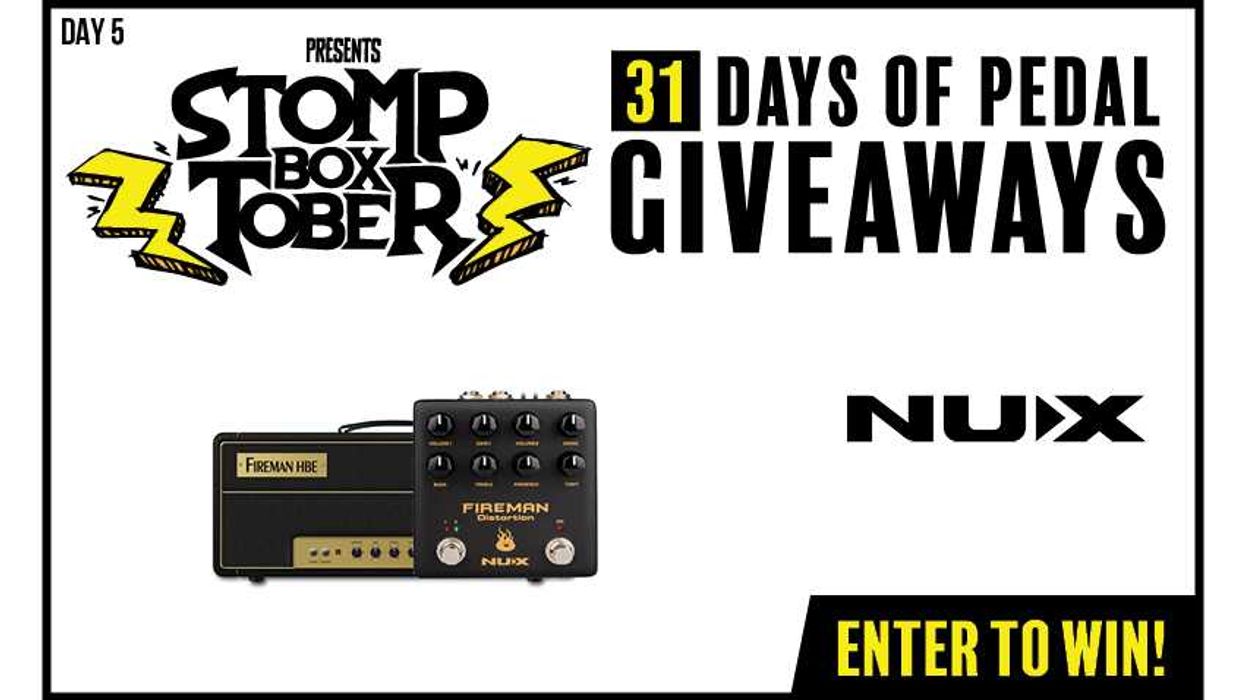
Things are heating up this Stompboxtober! Enter today for your chance to WIN the Fireman high-gain distortion pedal from NUX!
Stompboxtober 2025 - Win Pedals All Month Long!
NUX Fireman
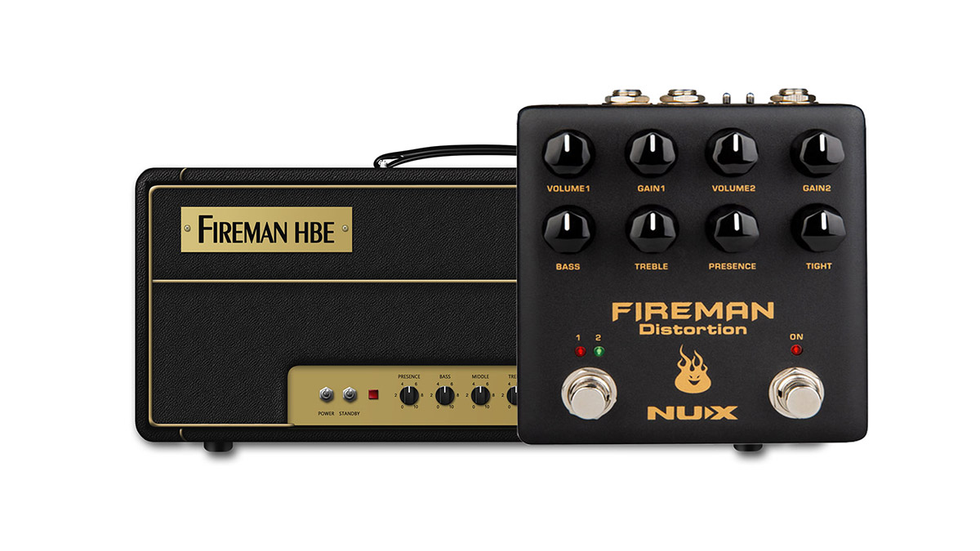
FIREMAN is based on the legendary amplifier builder’s famous distortion pedal. It’s a very amp-like distortion pedal with Modern Brown Sound. We designed it with 2 independent VOLUME, GAIN control knobs to fit rhythm and solo applications. FIREMAN offers a True-bypass / Buffer-bypass toggle switch, and a 9V / 18V toggle switch. The 18V position doubles the working voltage inside to give you wider dynamic range.
A Father’s Cherry Wood Becomes a One-of-a-Kind T-Style
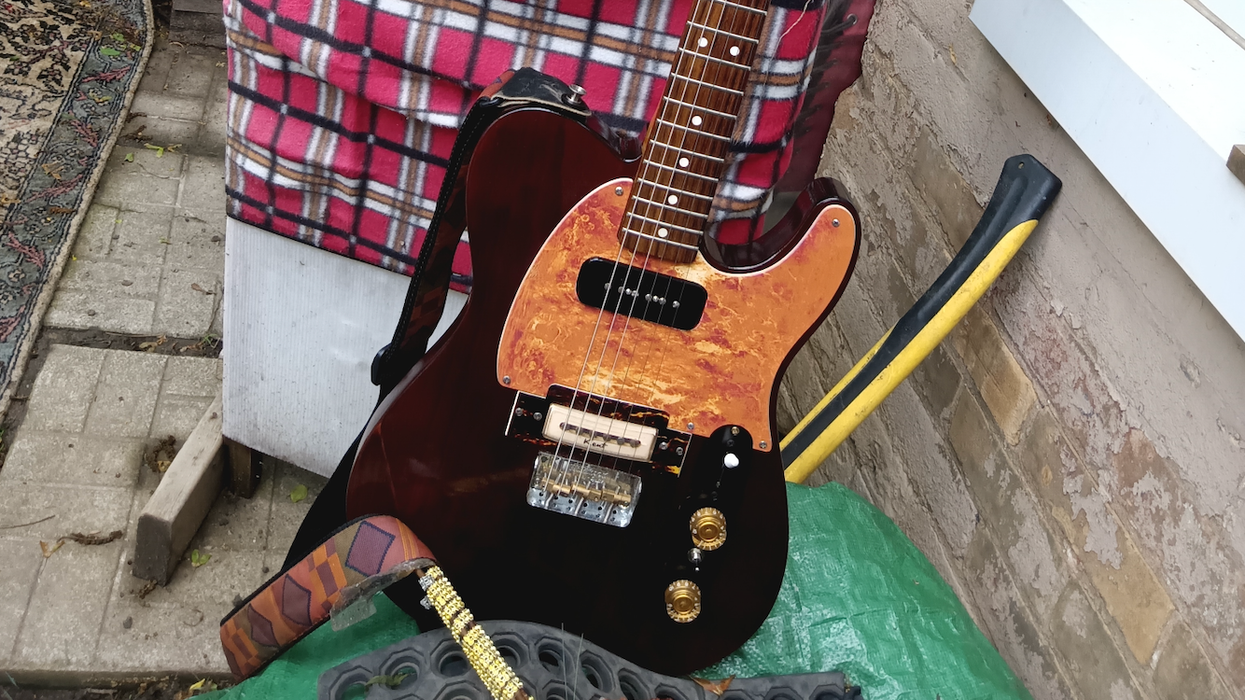
My dad, Al, was a skilled carpenter who did all manner of woodworking, including reproductions, cabinetry, and custom jobs. In the early ’70s, he and my uncle Bruno harvested a pile of walnut and cherry logs at a sawmill in Erin, Ontario. I went along, and it was a fantastic experience. The entire mill, both the main rip and cutoffs, was powered by a John Deere two-cylinder tractor with a 20-foot belt attachment. Wow!
Reader: Kirk Gresser
Hometown: Brantford, Ontario
Guitar: Alcaster
The planks were stored at my uncle John's farm for 10 years, and two brothers who assumed the business name Flintstone and Kramden (honoring Jackie Gleason, of course) decided to use them, along with butternut they purchased, to make a series of grandfather clocks. The guts of the clocks were from Germany, so they were costly, and then Ethan Allen came along and that was that for the clock business. Still, they made quite a few clocks, and by the time they were done there were just a few planks of the original wood left over. After my Dad passed I inherited three of them.
I wanted to use them to build a guitar, but having no experience in that world, I reached out to a talented local luthier, Jesse Livingstone. I gave him the cherry planks to shape the body, which would be his first electric-oriented project. I wanted a T-style but tend to find traditional Telecaster bodies chunky, so I used a 1/4" thinner Squier Telecaster as a template. Jesse also carved a Stratocaster-like belly and forearm cuts, and so the body feels much more like my Stratocasters—in other words, perfect.
“I wanted a T-style but tend to find traditional Telecaster bodies chunky, so I used a 1/4" thinner Squier Telecaster as a template.”
An inventive local amp repairman, Pete Vanderveen, installed the rosewood Squier neck, and stuck a Seymour Duncan P-90 in the neck position and a ’60s Kent single coil, which reminded me of an old Kelvinator refrigerator handle, in the bridge. The Wilkinson bridge enables stringing through the body or as a top-loader, and two Gibson speed knobs serve as volume controls for each pickup. Pete also installed a series/parallel switch.
The pickguard, made by Greasy Grooves, is designed to resemble rust. I had hoped to match the cherry red of George Gobel’s Gibson L-5 but couldn’t find the exact color, so I used burgundy leather dye and five coats of lacquer. The result, which I call the “Alcaster,” looks like black cherry. The whole guitar comes in at a light 7.5 pounds. With D'Addario .011-.049s, the guitar delivers a Les Paul-like tone on the neck pickup, while the combined sounds go from round to Howlin’ Wolf.
As for me? I've been writing songs for 50 years (not one of them has bought me so much as a cup of coffee) under the name Purple Joe. Imagine Mark Knopfler, Jimi Hendrix, and Neil Young playing poker with Scott Merritt and Carole King—and losing!
Podcast 519: Vilray
On this week’s Fretboard Journal Podcast, we’re joined by New York City-based guitarist and composer Vilray Bolles.
Alongside Rachael Price of Lake Street Dive, he’s one half of Rachael & Vilray, a duo with an uncanny knack for writing brand new songs that feel like they came straight from Tin Pan Alley. On their latest release, West of Broadway, the duo was inspired by both classic musicals and West Coast jazz. They even roped in Stephen Colbert for a cameo on the album.
During our chat, we talk about Vilray’s love for jazz, his days of busking (and the downside of cell reception at subway terminals), meeting Rachael at Boston’s New England Conservatory of Music, how they recorded West of Broadway and so much more.
Bonus: Watch Vilray perform “Forever Never Lasts” solo from West of Broadway!
Our new, 57th issue of the Fretboard Journal is now mailing. Click on the Subscribe link above to get it.
Our next Fretboard Summit takes place August 20-22, 2026, at the Old Town School of Folk Music in Chicago. https://fretboardsummit.org
We are brought to you by: Stringjoy Strings: https://stringjoy.com
(Use the code FRETBOARD to save 10% off your first order)
Mike & Mike’s Guitar Bar: https://mmguitarbar.com
Peghead Nation: https://www.pegheadnation.com (Get your first month free or $20 off any annual subscription with the promo code FRETBOARD at checkout).
The post Podcast 519: Vilray first appeared on Fretboard Journal.
Luthier on Luthier: StewMac’s Brock Poling And Gene Imbody
On Episode 106 of the Luthier on Luthier podcast, I’m joined by Brock Poling and Gene Imbody from Stewart-MacDonald—the original luthier supply company.
Brock and Gene take us behind the scenes to show how StewMac tools and products are developed, from the first idea all the way to delivery. We also discuss the company’s history and where they envision it heading in the future.
Luthier on Luthier is hosted by Michael Bashkin of Bashkin Guitars and brought to you by the Fretboard Journal. This episode is sponsored by Dream Guitars and StewMac.
Want to support Luthier on Luthier? Join our Patreon to get access to exclusive photos and content from Michael and his builds.
The post Luthier on Luthier: StewMac’s Brock Poling And Gene Imbody first appeared on Fretboard Journal.
Stompboxtober 2025: Eventide
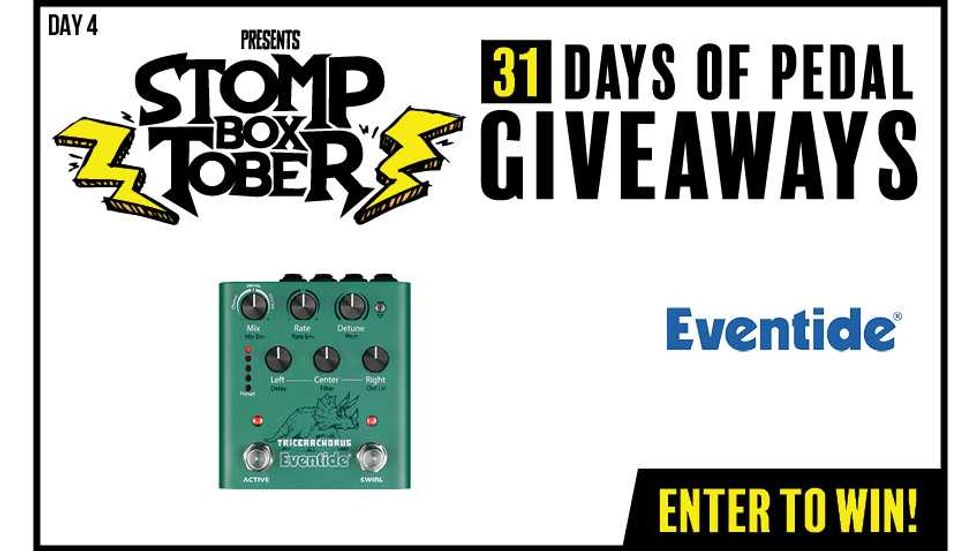
Stompboxtober is still going strong! Enter today’s giveaway for your chance to WIN the lush and legendary TriceraChorus from Eventide!
Stompboxtober 2025 - Win Pedals All Month Long!
Eventide TriceraChorus
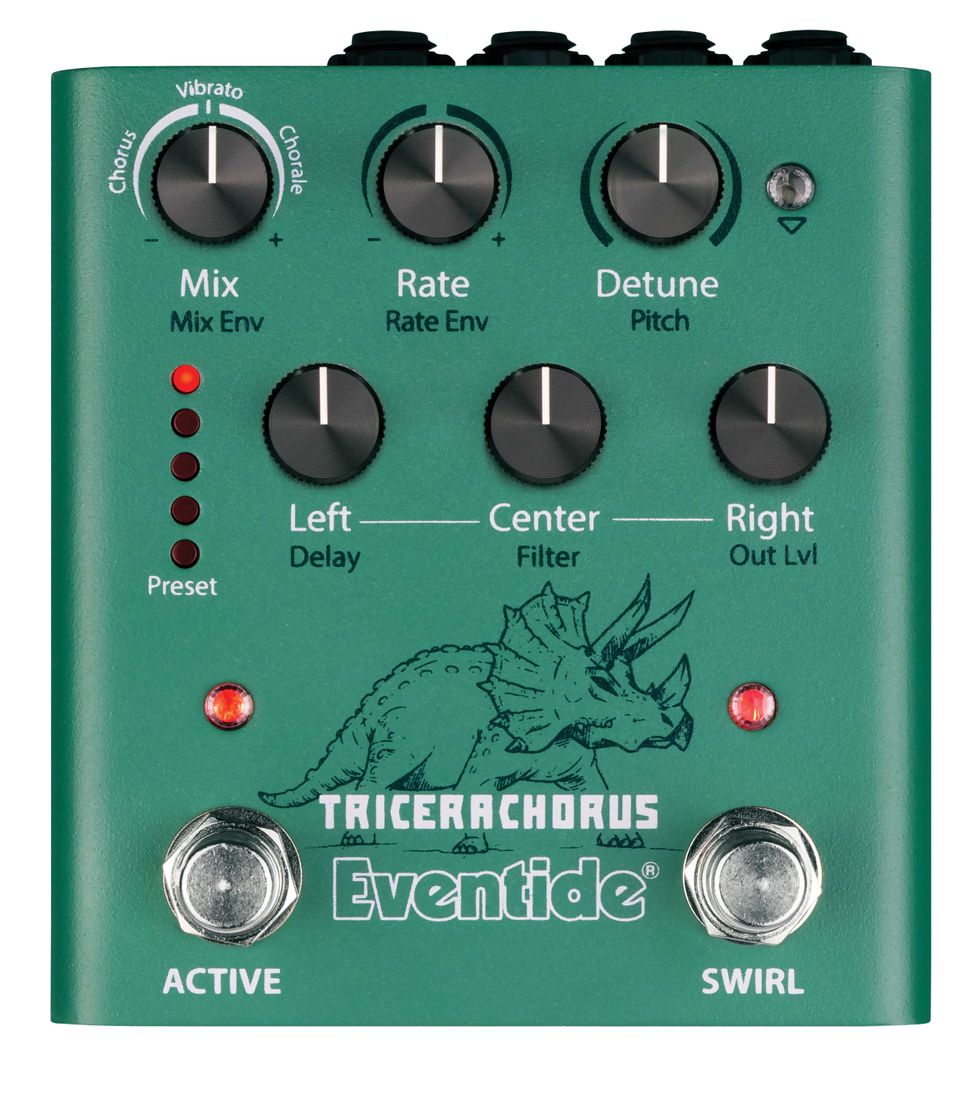
Inspired by the classic Tri-Stereo Chorus and stompbox choruses of the 1970s and early 1980s, the TriceraChorus pedal pairs rich Bucket Brigade-style chorusing with Eventide’s legendary MicroPitch detuning for a lushness that rivals the jungles of the late Cretaceous Period. TriceraChorus features three chorus voices and three unique chorus effects which can be used to create a wide stereo spread with pulsing waves of modulation. The innovative “Swirl” footswitch adds psychedelic flanging, phasing, and Univibe-style tones. It has never been easier to dial in syrupy smooth, deep modulation on guitar, bass, synths, strings, vocals, and more.
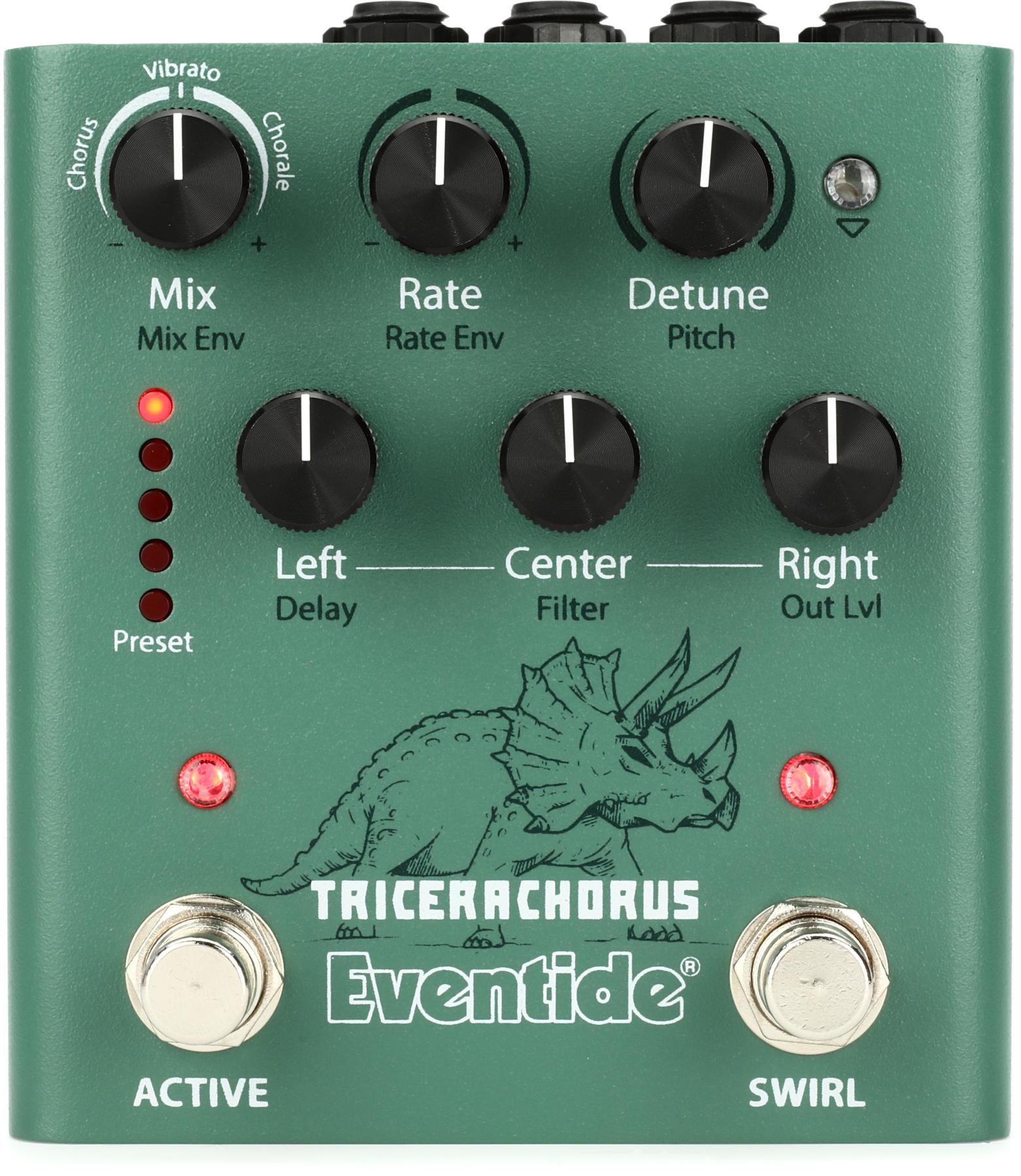
Eventide TriceraChorus Tri-chorus Pedal
Darkglass Anagram Review
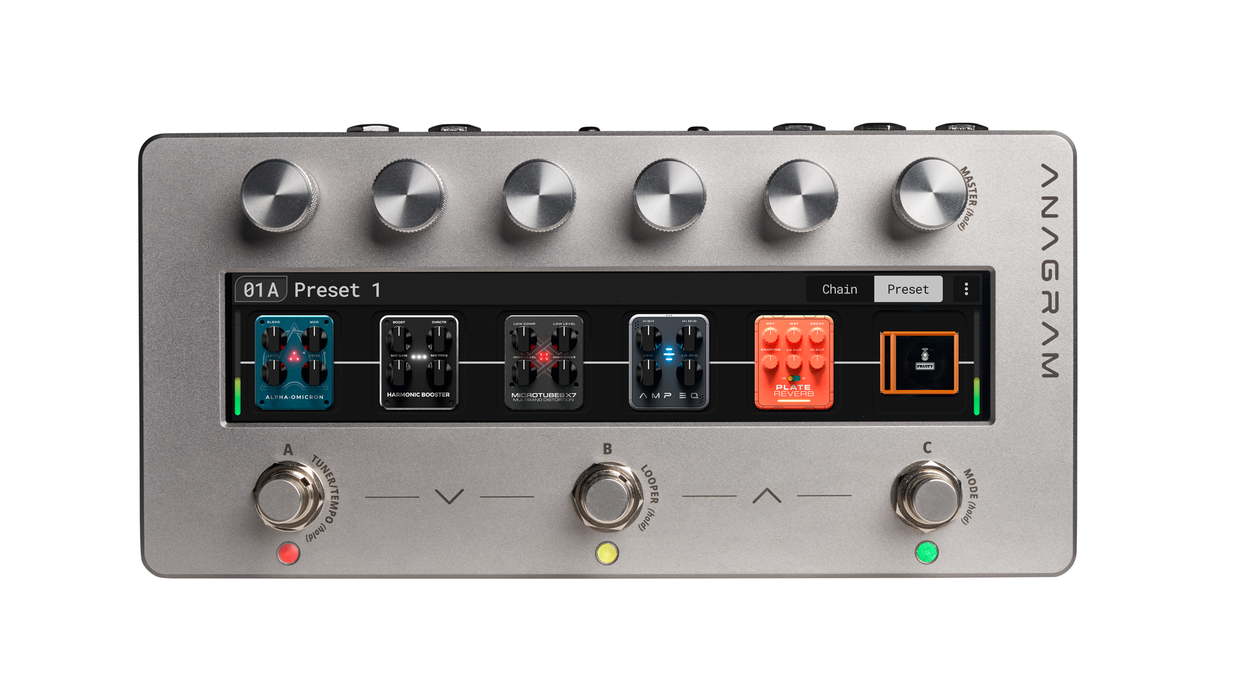
Darkglass Electronics is a bass player’s company. And like many bass-centric brands, they sometimes seem determined to ensure that guitar players aren’t the only ones having fun when it comes to amps and effects. If that’s true, the DSP-driven Anagram may be their most impressive form of revenge yet.
All The Things, All So Small
The Anagram is a sleek unit with just three footswitches and six knobs above the touch screen. Plug in the unit (there’s no on/off) and the screen lights up, welcoming you to your journey. It’s an inviting interface, and it’s hard to avoid the impulse to just start tapping and scrolling.
Connection options are plentiful: There’s a send and return that can be configured as a stereo effects loop or a mono loop and expression pedal input, a 1/8" headphone jack, and a USB-C port along with two 1/8" MIDI ports for connecting an external MIDI controller and sending MIDI. Four outputs take up half of the back panel, with two XLRs and two 1/4" jacks.
Looking Through the Darkglass
There are 19 pages of tutorial you can scan on the touch screen after the initial power up, but that shouldn’t be discouraging. The Anagram is, in general, easy to grasp. There are three modes that can be used to navigate its many features. Preset mode uses footswitches to move between presets, though there will be an audible gap when you switch between them. Stomp mode allows you to use the footswitches to toggle between three virtual stompoxes within a preset, so you can, for instance, use the chorus on a bridge and overdrive for your bass solo. The deeper scene mode enables you to seamlessly switch between scenes, which can include completely different groups of pedals and settings. Think of it as an octopus switching multiple stomps and turning knobs for you all at once.
Three screen views are available: chain, bindings, and name. Chain view provides the most pedalboard-like representation of the signal path. This is where you can manage and route your preset’s effects in an efficient, more “analog” way. It’s intuitive and the most direct way to create a preset from scratch or reshape an existing one. Bindings mode allows access to parameters within a preset and enables you to assign the most critical controls to the six knobs at the top of the Anagram. Name mode displays—you guessed it—the name of the active preset. It’s the easiest readout to see in a low-light stage setting. But if any of the individual views don’t serve your purposes, the modes can be combined in multiple configurations.
The Anagram makes editing global settings a breeze. Hold down the sixth knob to enter mixer mode, where you can control the L/R and XLR outputs—either individually or linked for consistent volume—as well as the headphone and master outputs. Tapping the “EQ” box in this screen takes you to the very precise global EQ, where you can adjust gain, width, and frequency in a range from 25 Hz to 16.0kHz.
Ana-tons of Tone
With more than 50 effects (Darkglass says that thousands of additional effects and amps are available via integration with the Neural Amp Modeler), Anagram's factory presets are a great place to begin exploration. I jumped down the rabbit hole starting with Factory preset 01—“harmonic booster.” In this preset, there are six elements in the chain, and when one of the six knobs along the top row are pressed, the corresponding effect goes dark, signaling that the effect is off. The same six knobs also control user-defined parameters within the effect, or a virtual speaker cab, if you switch one into the chain. Once you’re happy with your tweaks, you tap the three dots on the touch screen and save the preset. It’s really simple. Swapping effects within a preset is just as quick—tap the pedal icon you want to change, and you’ll jump straight to its edit screen.
While the sounds are superb, the Anagram truly shines in its ease of programmability and the precision with which you can switch things up.
Paired with my passive, J-bass-style Bluesman Vintage Eldorado, the harmonic booster preset was enough to make my day. Though there are 12 effect blocks available—or 24 in parallel—in that preset, only five are used in its factory preset form, permitting me to add rich chorus and octave to the already satisfying tone. The depth of familiar effects and amps is impressive. With searing overdrives, signature Darkglass pedals, and a super-wide range of bass-centric effects, I was like a kid in a candy store. And there are also 20 cab options and a boatload of mic options that can be situated in different positions relative to the cab. The options are seemingly endless.
The Verdict
The Anagram is ideal in a lot of settings. For fly dates, it’s compact and easy to re-program if, say, you add a new song to the set on a whim. Provided there is a proper P.A., the unit is truly all you need to get the job done. Able to run the gamut of vintage and modern sounds, it could be a cover-band bass player’s best friend. And while the sounds are superb, the Anagram truly shines in its ease of programmability and the precision with which you can switch things up. From an economic standpoint, the Anagram is the equivalent of purchasing several traditional floor pedals … and then getting hundreds more for free. At just under $1,200, that’s math that makes sense.
It’s All About Feel (Not the Notes)
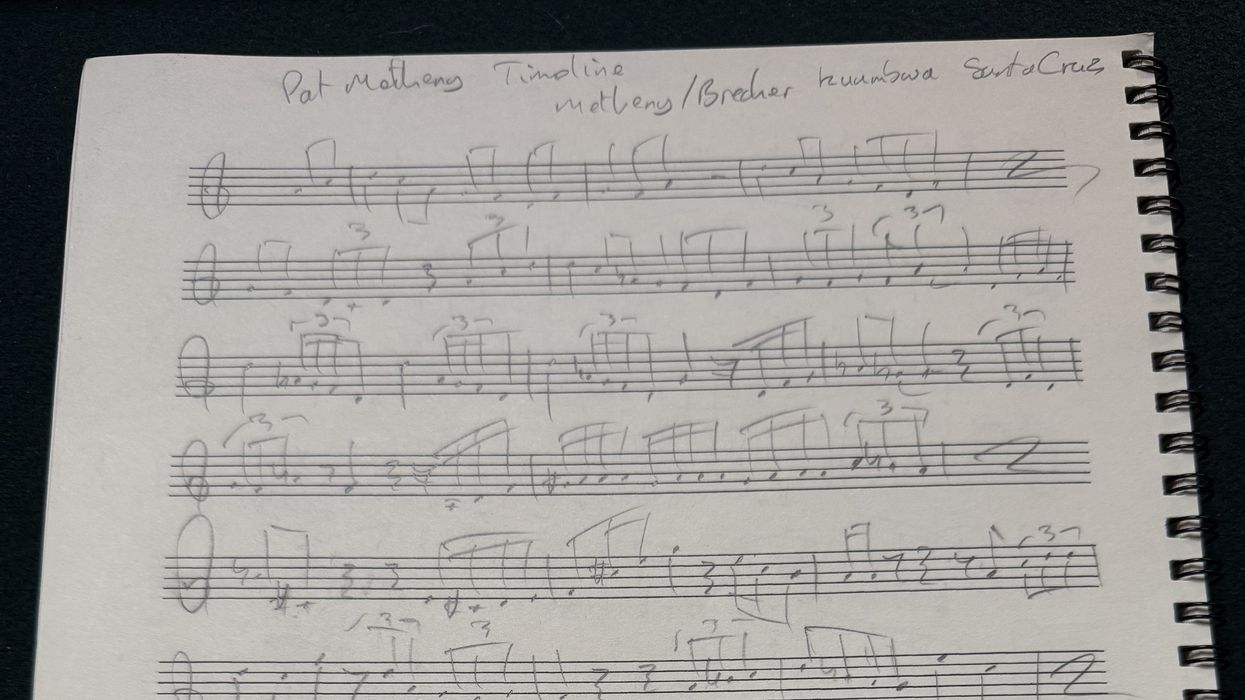
I’m in the middle of writing a book about transcription and ear training. Broadly speaking, I think the two are essentially the same thing.
Transcription, at its core, is about the connection between listening and playing. It’s the real work we do to become more fluent as musicians. Listening, I think, is a relatively low-effort exercise since you can do it almost anywhere, while doing almost anything. On some level, the performance element of our playing could also be considered low-effort when compared to the work required to get there.
There are, of course, exceptions to both—especially in situations like active listening, where you’re learning a piece of intense music in a short space of time, or when you’re on a gig and reading something complicated. Both of those are anything but low-effort. But in general, the real workload comes when we are bridging the gap between them.
Now, whether you refer to it as ear training or transcription, what I’ve come to realize over the three decades I’ve been training my ear and writing things down is that it’s actually all about the feel—and has comparatively little to do with the notes.
Think about being in a room with two people speaking fluent French. You don’t speak a word of it, but there are a few sounds that resemble English. Immediately, you can mimic the sound of their voices, the tempo of their speech, and even approximate an accent. Yes, it’s going to sound terrible at first, and it might come across as if you’re mocking them—trying to speak like them without any actual vocabulary.
But I believe that by mimicking the time, the sound, and the feel of their language, you’ll get closer to fluency much faster once you start adding even the smallest amount of vocabulary. Being able to say hello, goodbye, how are you, and a few other basic phrases with a legitimate-sounding accent and tempo will give the outward impression that you know what you’re doing—and the inward confidence that every new word you learn will feel more authentic than if you had just memorized phrases without ever hearing the language.
I’m a jazz musician, and this method of bridging the gap between listening and playing has been my life’s work. I still practice it almost every day. That doesn’t always mean transcribing pages and pages of John Coltrane solos, but my intent is always guided by curiosity. As soon as I hear something great—or something I don’t immediately understand—I switch into transcription mode and get down to work.
“Singing along to a bass line is priceless. It not only locks the rhythm into your brain, but it also builds instinct for where the root motion of the harmony is going.”
Vocalizing as I listen has always been a fantastic way to get into transcription. It’s not great for anyone listening—I’m a horrific singer—but it’s not about singing all the pitches perfectly in tune. It’s about getting the feel and the rhythmic language of the music embedded in your brain long before you pick up your instrument to learn it, or put pen to paper to write it down. Singing along to a bass line is priceless. It not only locks the rhythm into your brain, but it also builds instinct for where the root motion of the harmony is going. More often than not, the bass is at the bottom of the chord, and being able to pick out the root motion is a superpower when it comes to learning songs or working in a band.
And if, as a result of active listening, vocalizing, and transcription, you build a strong connection between your ear and your instrument, then the feel of the music is always going to be front and center.
Even though everyone in the band should be equally responsible for the time and the feel of a song, we all know that bass players often shoulder more of that weight. We have so much rhythmic and harmonic control from our position in the mix that I think it’s imperative we work even harder on our feel than everyone else. Call me biased, but I think history might back me up on that one.
Stompboxtober 2025: VOX

Stompboxtober continues with today's featured pedal: The VOX Auto Wah V863-CA! Enter below for your chance to WIN all month long.
Stompboxtober 2025 - Win Pedals All Month Long!
VOX Auto Wah V863-CA
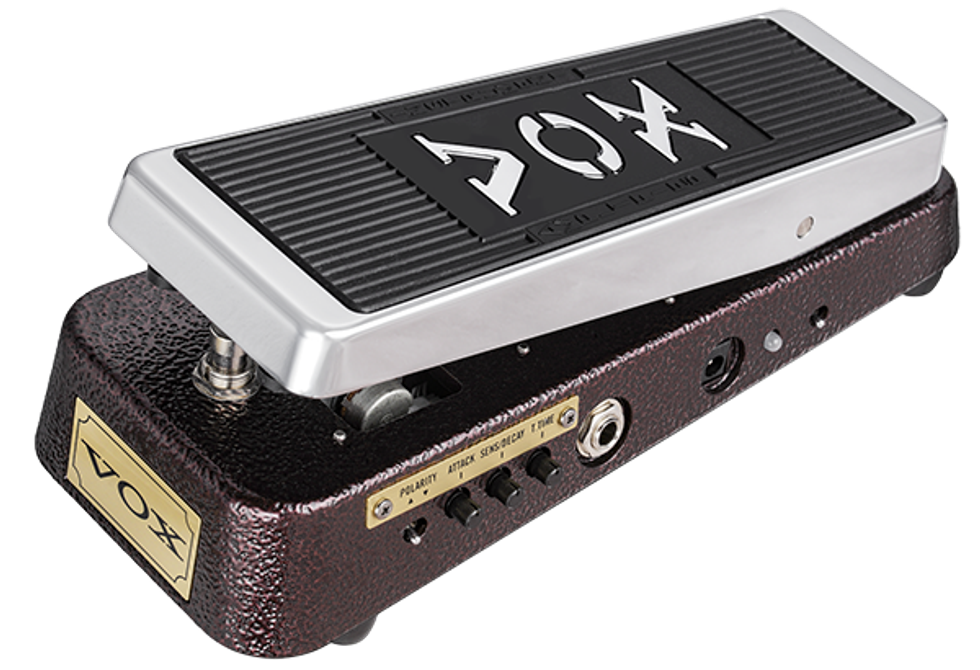
VOX has shaped the sound of expressive guitar since the very first wah. The new VOX Auto Wah marks the next step: combining the classic sweep of a traditional wah with the modern versatility of an auto-wah in one creative, hybrid pedal.
This latest VOX Wah offers three distinct ways to bring your tone alive. In Pedal Mode, it delivers the timeless treadle sweep that defined funk and rock. Envelope Generator Mode introduces automatic movement triggered by your attack, while Envelope Follower Mode responds dynamically to your playing intensity, creating vocal-like textures that shift with every dynamic nuance. Seamless transitions between manual and auto control—simply by stepping on the treadle—keep the pedal feeling intuitive and musical underfoot.
Designed for today’s funk, fusion, jam-band, and experimental players—and inspired by the adventurous spirit of pioneers like Bootsy Collins—the VOX Auto Wah V863-CA blends heritage with innovation. It’s not just a nod to the past; it’s a forward-looking tool for guitarists seeking fresh sounds and new forms of expression.
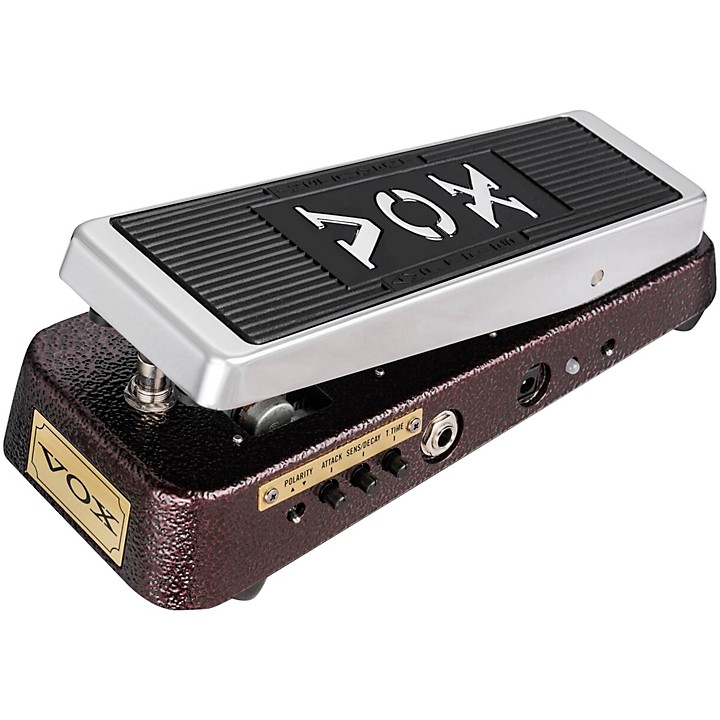
VOX V863-CA Custom Auto Wah Pedal
Fender gives its Tone Master FR-12 cab a vintage Tweed makeover

Fender’s Tone Master range is designed to offer guitarists digital amplifiers which replicate the look and feel of vintage tube models.
When we got our hands on the Tone Master FR-12 – a full-range, flat-response active cab unit with a 12-inch speaker – in 2023, we gave it a strong 9/10 in our review, citing its affordability and time-honoured aesthetics.
The Tone Master FR-12 essentially offers a solution to players dabbling with amp modellers, but who also don’t want to give up the look and feel of having an actual amplifier.
So the fact the Big F has just given the FR-12 a Tweed reskin is certainly going to pique the interest of the section of the Venn diagram interested in both modern amp modellers and vintage amps.
As stated, the Tone Master FR-12 Tweed boasts a full-range, flat response powered speaker, meaning it replicates faithfully “every detail of your amp simulations”. This time, though, it comes wrapped in a ‘50s-era tweed covering and brown-striped grill cloth.
Elsewhere, the unit features an integrated 1000-watt power amp, delivering the volume and headroom you need for a multiplicity of studio or stage environments.
There’s also an onboard three-band EQ and high-frequency cut control, meaning guitarists can fine-tune their tone beyond the amp modeller they’re running through.
The Tone Master FR-12 Tweed is available now, priced at £579 / $649 / €689.
For more info, head to Fender.
The post Fender gives its Tone Master FR-12 cab a vintage Tweed makeover appeared first on Guitar.com | All Things Guitar.
“We were probably one of the only acts there singing live”: Yungblud responds to criticism over VMAs performance with Aerosmith
![[L-R] Yungblud, Steven Tyler and Joe Perry](https://guitar.com/wp-content/uploads/2025/10/Yungblud-Aerosmith-VMAs-hero@2000x1500.jpg)
Last month, Yungblud joined forces with Extreme’s Nuno Bettencourt, and Aerosmith’s Steven Tyler and Joe Perry for a raucous Ozzy Osbourne tribute at the VMAs. However, it was met with some criticism – namely from The Darkness’s Dan Hawkins, who called the supergroup “nauseating”.
While Hawkins’ slammed the performance, labelling it “another nail in the coffin of rock and roll” on his Instagram, Yungblud is taking the criticism on the chin. In his own words, the impassioned performance of Crazy Train, Mama, I’m Coming Home, and Changes was an “organic” display of the “power” of rock music. “I think we were probably one of the only acts singing live there,” he reflects in a new episode of The Magnificent Others podcast with Billy Corgan.
Elsewhere in his criticism, Hawkins noted that it felt like the group were jumping on a bandwagon “to further their own careers”. However, Yungblud doubles down on the authenticity of his love of rock and roll.
Thanks to his dad’s guitar shop, Harrison was raised around rock. “I’m a kid from a guitar shop whose education was T-Rex, Bowie, The Sex Pistols, The Clash… it’s truly in my blood, you know?” he explains.
Doubters aside, other rockers have gladly taken Harrison under their wing. Ozzy Osbourne was vocal about his appreciation of the young rocker, even gifting him a cross while filming the music video for Harrison’s 2022 single, The Funeral. Now Aerosmith are giving him the stamp of approval.
Harrison and Aerosmith are set to release a collaborative five-track EP, One More Time, this November. The first track, My Only Angel, serves as the first taste – and it sounds like a pretty strong pairing. And it was in the works long before the VMAs performance.
“Me, Steven [Tyler] and Joe [Perry] got together before the Ozzy thing was even about,” he tells the Smashing Pumpkins frontman. “We were just going to write together for fun… but when your heroes are like, ‘yo, do you want to get in the studio?’ you’re just like, ‘yeah!’”
“We heard our voices together, and Steven was like, ‘oh my God, you can get up to the places where I can go!’” he recalls. “There was almost this friendly competition between me and one of my all time vocal heroes, someone that I’ve sat in my room and studied.”
In terms of the EP, Harrison insists it’s “real fucking rock” to the core. “Like guitars, live drums, solos in every song, wailing, screaming,” he explains. “Me and Steven are just competing with each other [vocally] in the most beautiful way.”
Looking forward, the haters are going to have to suck it up, because Harrison’s rock and roll era is only just beginning. “I would love to be able to play stadium rock all over the world,” he insists. “Because I think that’s where I come alive as a frontman.”
One More Time is due to drop 21 November.
The post “We were probably one of the only acts there singing live”: Yungblud responds to criticism over VMAs performance with Aerosmith appeared first on Guitar.com | All Things Guitar.
Fishman AirLock Wireless GT Review
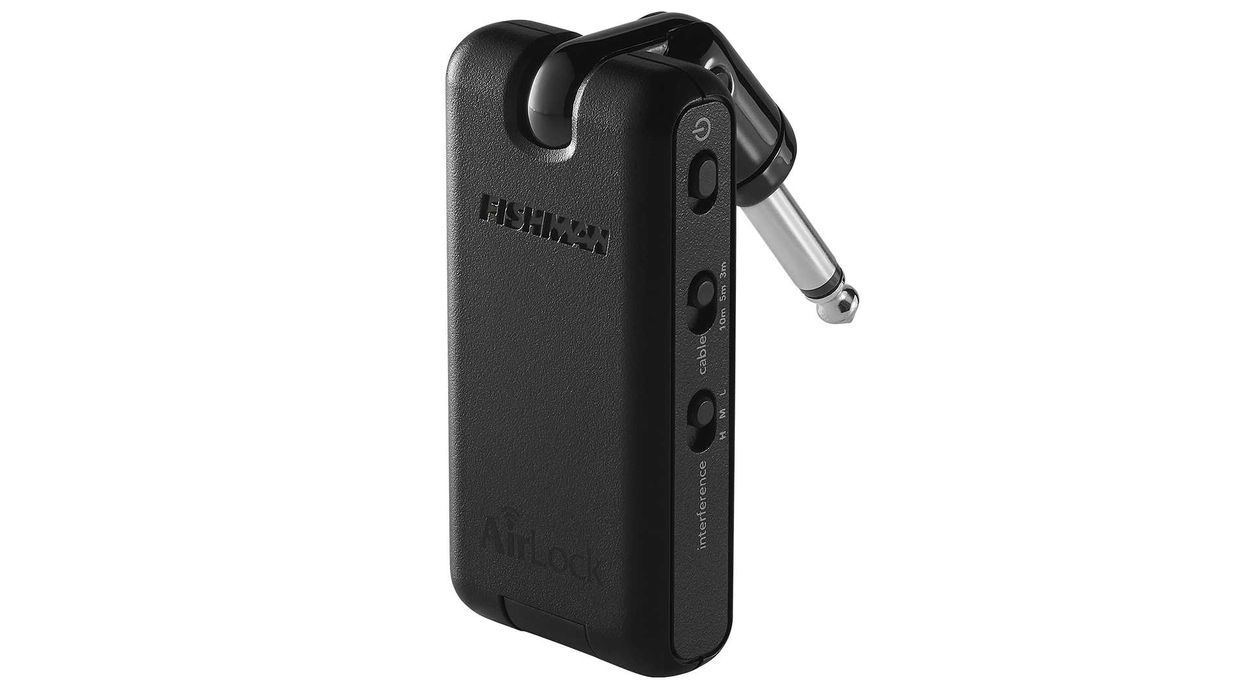
I've kept a keen eye on affordable wireless systems since the late ’90s, when I first decided to go cable-free. The latest entry is Fishman’s look-ma-no-cables debut, the AirLock Wireless GT. It’s an appealing and compact system. There’s a 3.5" x 2.5" receiver that plugs directly into a pedalboard or amp and a 3" x 2" transmitter that plugs into your guitar jack, so size-wise it’s comparable to Line 6’s G30. Like that device, it also has cable tone settings, with positions that replicate the effect the capacitance of 3-meter, 5-meter, and 10-meter cables have on a guitar’s sound.
The kit comes in an 8" x 5" x 3" molded carrying case that includes a Y charging cable to juice up the transmitter and receiver via a single USB out, and a USB data cable. A 5-minute charge gets you two hours of playing time, but a full charge can last for 9 to 10 hours, according to Fishman. There is also a USB power supply that's sold separately, plus the GT can take a barrel pin connector for more permanent pedalboard installs. That’s a lot of options for power.
The transmitter also has a switch to combat frequency interference, with low, medium, and high settings. The higher each setting goes, the higher the latency, but, again according to Fishman, the maximum latency is only 4.9ms, which is, essentially, undiscernible. I certainly could not detect any while I played.
Firing up the AirLock Wireless GT was effortless. The devices are pre-paired and connected instantly every time. The transmitter and receiver also felt very secure when plugged into the inputs of my guitar and my pedalboard, and both devices feature the sam articulating plug, so it’s easy to plug securely into a variety of input-jack styles.
True Tone
Where the AirLock really shines is fidelity, and the cable tone settings are a big part of this device’s overall sonic picture. I loved how sparkling and alive my guitar sounded with the cable tone set at 3 meters: harmonically rich and vibrant in a way my current wireless setup doesn't quite achieve. Honestly, I felt the Wireless GT’s interior circuitry improved my natural tone. With the setting at 5 meters, I heard some loss of high end more like what I’m used to in cost-efficient wireless units. But I also find the resulting darkness and midrange focus appealing, since I typically shoot for a warm, burnished, mid-focused sound. At 10 meters, there was a bit too much detail loss for my tastes, but as always with guitar tones, each individual player’s preferences will out.
The hitch for me was range. While Fishman promises 120 feet under what it refers to as “spin range” conditions (essentially taking a spin around the venue while playing with a lot of energy) and promises that “line-of-sight” is not required, I experienced some dropouts walking just two rooms away from the receiver in my home. When I wandered outside the sound became intermittent at about 50 feet. Granted, there was a wall with a window and a door between me and the receiver, but I’ve gone well over 100 feet off stage in a club and outside into the street, with the signal sustained through a brick wall with glass windows and a door, with my current wireless, which falls in the same price range. Your results may vary.
The Verdict
While my experience with the AirLock Wireless GT’s range didn’t match Fishman’s testimonial, the unit’s price, sound quality, ease of use, and small size is wildly appealing, and I would not hesitate to use it on a large stage or in a space where line of sight is not an issue. As a result, I would urge guitarists looking to play untethered take it for a literal spin themselves.
Put your pedal to the metal with Gamechanger Audio’s new Motor Pedal

Gamechanger Audio has just released the Motor Pedal, the world’s first electro-mechanical synth pedal equipped with a DC electro-motor block core controlled via a gas pedal.
A unique meeting point between a fuzz, octaver and synth, the Motor Pedal’s musical motor oscillator is an opportunity to really find the ‘biting point’ of your sound. The pedal motor’s rotational speed will match the frequency of your performance in in real time, with the option of pumping on the gas to tweak your sound – and there are five unique modes to reshape its sound.
Whether you’re into the glitchy, raw feel of the standard Motor mode, or the resonant analogue vibrations of the Coil Mode, the Motor Pedal has plenty of creative potential. There’s also MXD mode, a cross-modulation of the motor with a digital waveform for harsher, metallic textures, as well as the pitch-locked M-Wave and Vocoder modes.
In terms of the physical gas pedal, you can also flick between different modes to tweak how the pedal plays with your sound. You can use it as an Accelerator to pitch shift, a Brake for downwards pitch-shifting or totally pumping the breaks to halt the motor, or a Clutch to create drones and disconnect the motor from its pitch-tracking. The pedal can also play with Volume and be used to Drift for some lovely vibrato.
Elsewhere, the pedal also has Tone Boost, a pair of independent volume knobs, Glide and Vibrato as well as an X-MOD Mode to use amplitude modulation to mix and cross-modulate across all the motor engines.
The pedal isn’t merely for guitar riffing, however. The pedal can tweak just about any sound, from singing to a harp, as YouTuber Emily Harpist showcases in a review of the Motor Pedal.
However, there is somewhat of a drawback to utilising an electro-motor block as your core sound engine – it wears down over time. Gamechanger Audio has managed to add in a pretty humorous way of making you aware of the state of your motor, however; an ‘engine light’ on the pedal will light up orange, before eventually turning red. According to Gamechanger Audio, the block should last you anywhere between 3000-5000 hours, with a replacement motor block set to cost under $30.
Gamechanger Audio’s Motor Pedal is available now for £299.
The post Put your pedal to the metal with Gamechanger Audio’s new Motor Pedal appeared first on Guitar.com | All Things Guitar.



